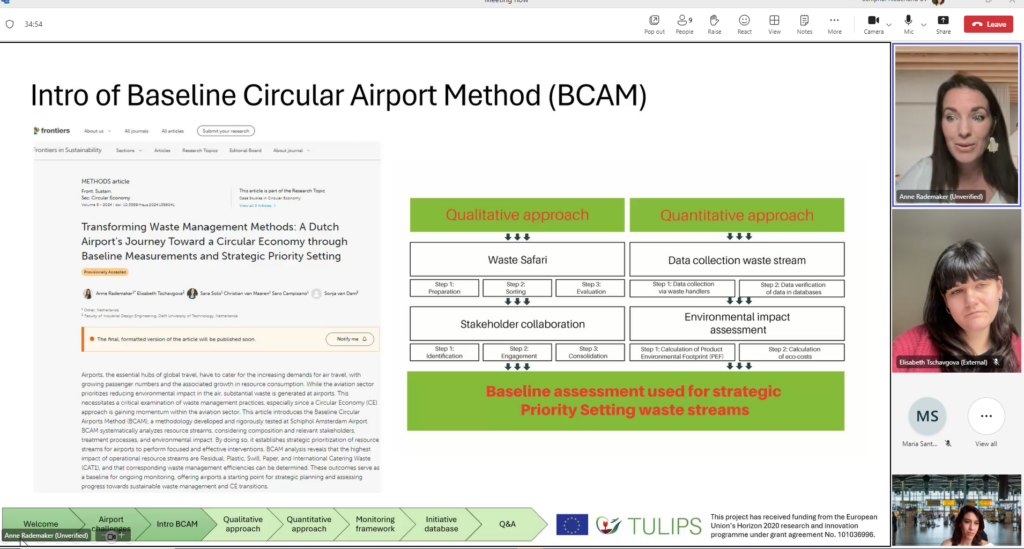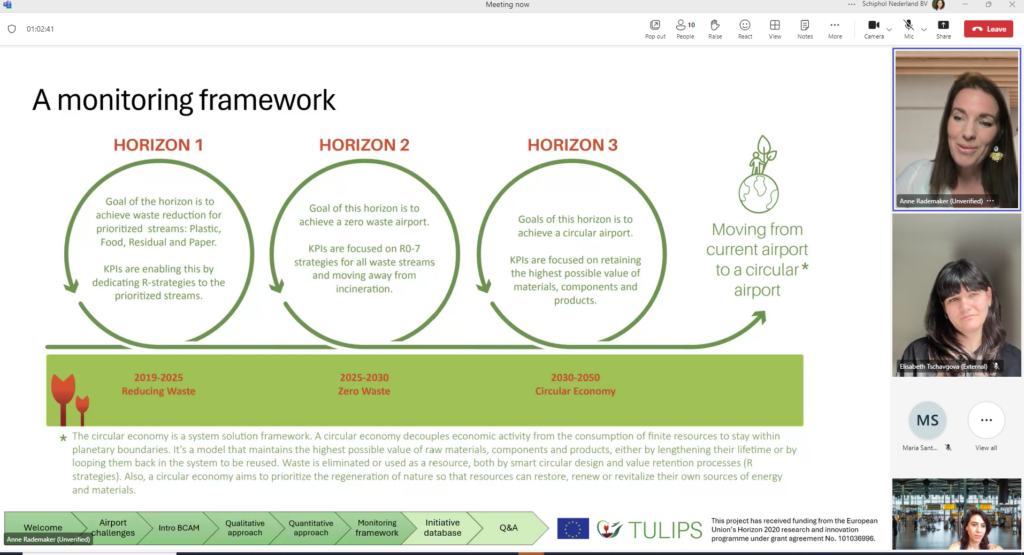April 2024
More and more attention is being paid to circularity at airports. We need to get rid of the linear waste systems at airports, which cause more emissions. The EU and ICAO are also aware of this. But how? To this end, TULIPS partners presented an innovative Baseline Circular Airports Method (BCAM) at the World Circular Economy Forum in April 2024. This method is empowering airports to minimise waste and foster environmental stewardship. From a waste safari to stakeholder collaboration; it supplies airports with practical tools to get started. You can also find all kinds of use cases on our new zerowasteairports.com website. Join us!
From waste to resources
The concept of green airports aims to enable airport managers in Europe to sustain their operations and even grow while at the same time significantly reduce their environmental impact. On this token the aviation sector is gearing up to drastically reduce its carbon emissions to meet the overarching European Green Deal targets. The other subject is waste – or how we prefer to describe this – resources!
Linear waste streams lead to emissions
In airport operations resources have been justified by concerns of hygiene, safety and customer convenience. The outcome of its subordinate role traditionally led to linear waste streams and onsite incinerators that translate waste directly into emissions. In the past decade consciousness on waste management has been growing across all sectors, with the ambition to better integrate the principles of a circular economy.
Sustainable resources management
In the aviation sector this journey was started by early movers, amongst which is the Royal Schiphol Group, that manages the TULIPS Lighthouse airport Amsterdam Airport Schiphol. The main output of the TULIPS project will be sustainability roadmaps for airports in Europe that support their local strategies towards sustainable airport operations until 2030 and beyond. One of the seven essential building blocks for these roadmaps is sustainable resources management and circular use of resources.
Airports working group on circularity
To create a tangible outcome for airports in this rather unregulated field, TULIPS engaged in a powerhouse on circularity with other leading EU airports. These include Copenhagen (CPH) and the Aeroports de Paris (AdP), which are lighthouse airports in the ALIGHT- and the OLGA project respectively. Our sister project Stargate (Brussels) is also involved. The objective of this working group is to increase the understanding of how circularity can contribute to the reduction of waste and emissions in airport operations in a sustainable and economically viable way. And it comes timely as the commission is currently reviewing its Waste Framework Directive. Additionally the commission is seeking to push the implementation of the EU Green Deal through the New Circular Economy Action Plan.
Tackling waste streams is prominently on ICAO agenda
At an international level the subject is also receiving primary attention. This was clearly demonstrated through the ICAO Seminar on Green Airports which dedicated half a day to the impact of single use plastics to the world’s ecosystems. They also addressed what airports across the globe should do to eliminate their impact in this regard. And the message was clear:
- know your resource streams and manage it sustainably
- avoid linear waste streams
- apply principles of circularity
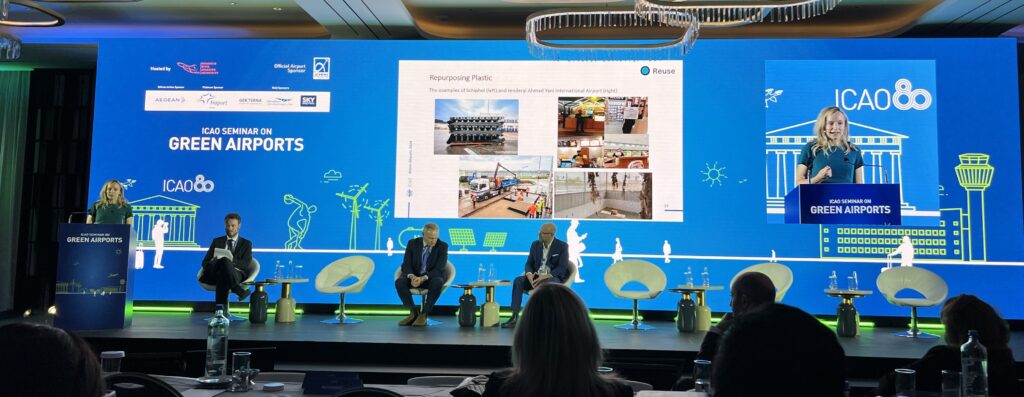
You can watch a video of the UNEP about plastics on ICAO TV.
Sector specific assessment methodology
During April 2024 TULIPS and its partners engaged in pushing the agenda on paving the way for airports to understand and integrate the subject to daily airport operations. Representatives from Schiphol, Copenhagen and Paris Airport engaged in a high level panel discussion during the Passenger Terminal Expo in Frankfurt to inform participants on what leading Airports in Europe are doing. They explained about identifying waste streams, lifting potentials for reusing and recycling materials by applying circular principles and life cycle extensions. TULIPS put particular focus on a sector specific assessment methodology. This methodology allows airports to attribute the economic- and environmental value to the adoption of circular principels in their waste management strategies.
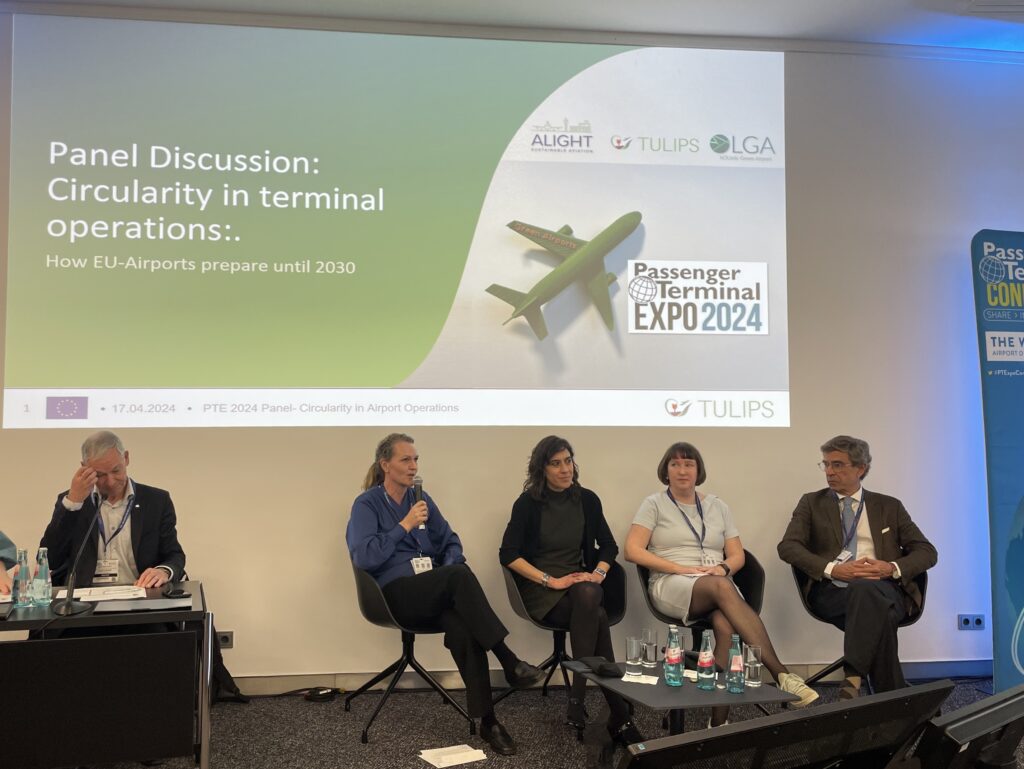
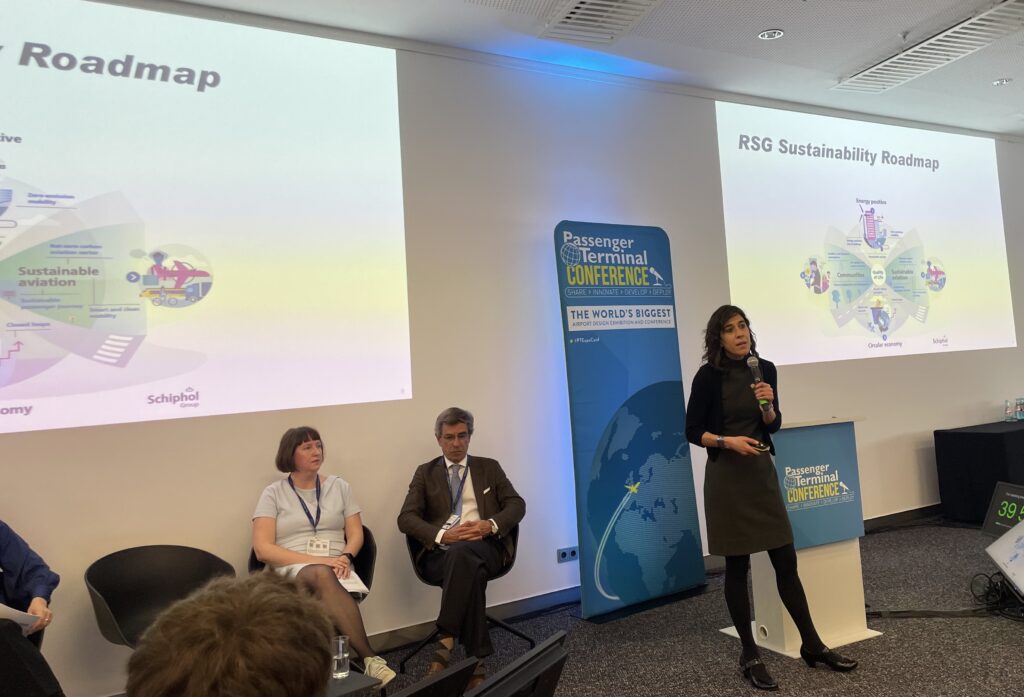
Unveiling the Baseline Circular Airports Method
Another insightful contribution came from the public unveiling of the innovative Baseline Circular Airports Method (BCAM) at the World Circular Economy Forum 2024 (WCEF) by the Anne Rademaker (EME), Sara Solis (Royal Schiphol Group), Elizabeth Tschavgova (TU Delft). Tested at Amsterdam Airport Schiphol and validated at Hermes Larnaca Airport and Avinor Oslo Airport, BCAM is a pioneering approach that includes:
- Waste Safari
- Stakeholder Collaboration
- Operational Resource Streams
- Environmental Impact Assessment
This method is empowering airports to minimise waste and foster environmental stewardship.
Keep an eye out for the upcoming article that delves into the details of the BCAM and let’s transform airports into sustainable hubs for future generations!
Visit zerowasteairports.com to get started
We would like to invite airports and domain experts to browse and contribute to the TULIPS zerowasteairports.com repository for use cases from airports that are integrating circular principles in their operations. Feel free to add your own great initiatives so we can share the knowledge and accelerate the transition towards a global circular economy! On the website you can also find free tools.
https://zerowasteairport.com/resources
